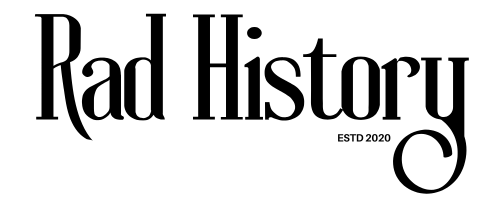Up until recently, a person would enter the workforce in their chosen field and work in that role for their entire lives until retirement. Deviating from that path was considered to be a sign that the person was a failure or that they were unreliable. That’s now a thing of the past, working your entire life in a single career is now almost unheard of.
In fact, making a mid-life career pivot is not only normal, it’s typically celebrated as a sign of growth. Many people are motivated to make a change because they are in their 40s or 50s and they want to try something new or make more money. For many, it’s simply not enough to make enough to pay the bills and they want to feel fulfilled and contribute in a role that suits their talents and interests.
We live in an age where people are living longer lives and staying active in the workforce is a great way to have a varied life and career. Some of the most interesting people in history only found their true calling in their midlife years and later in life.
Prominent Career Changers That Changed History
When we take a longer look back into history, we can see that the concept of staying in a single job for your entire life didn’t really exist until relatively recently. Talented people have always adapted to changing conditions that were precipitated by famine, war, technological advances and other factors. In the recent past, this was less common, but there were still people in modern times that made dramatic career shifts.

A prime example of this is Julia Child. She became an icon in the culinary field, but up to that point she had a very varied career. She got her start in advertising until World War 2 began and at that point, she volunteered for the Office of Strategic Service (OSS) which was the precursor intelligence organization to the CIA in the postwar period. She didn’t decide to embark on a career in cooking until she was almost 40. It was a move to Paris that prompted this change and she enrolled at Le Cordon Bleu to learn how to cook. In her late 40s she finished her first book titled Mastering the Art of French Cooking and by the age of 50 she was a chef on TV. Her love of French cuisine, ambition and infectious enthusiasm inspired people to learn how to cook.
Another well known figure in cooking was Colonel Harland Sanders and we can see his face every time we pass a Kentucky Fried Chicken restaurant. But, Colonel Sanders didn’t become rich and famous until he was in his mid-60s and before that he’d worked in a wide array of jobs. Throughout his life, he had been a steamboat operator, farmhand, railroad fireman, insurance salesman and he’d run a service station where he cooked food for travelers. This last job is where he discovered and perfected his now famous fried chicken recipe. The recipe was refined over decades and he knew that he could make the best fried chicken. He franchised his restaurants, but he couldn’t rely on youthful energy to get him through the tough times, so he had to use his decades of experience. He was rejected multiple times until he got his business off the ground and now Colonel Sanders is a globally recognized household name.
Back in ancient Rome, Cato the Elder was a prominent senator and respected moralist. However, this was not always the case, he began his working life as a farmer and later became a soldier in the Roman Legions. He didn’t enter public service until he was well into his middle years. At this time, he began to advocate for discipline, simplicity and civic virtue and the impact of work on Roman values and culture. This transformation demonstrates that a new vocation later in life can often bring different values to prominence that are not formed through youthful ambition alone.
A full accounting of prominent mid-life career shifts would be far beyond the scope of this article. But, here are some notable examples to further prove our point. Vera Wang was a journalist and figure skater, but she didn’t pivot to fashion designer until she was 40. Laura Ingalls Wilder was 65 when she wrote and published Little House on the Prairie. Ray Kroc bought the McDonalds company at the age of 52 after he noticed the untapped potential of franchising. All of these people are proof that human reinvention can be fulfilling and that our experiences can bring something new into any field.
Why is a Midlife Career Change Booming Now?
At this time, it’s not only possible to switch careers in your 40s or 50s, it’s actually far more likely than at any point in recent history. This is due to a confluence of shifting values, economic forces and technologically driven changes. For most people, some kind of career pivot is inevitable and people are living and working for longer. Today, a 40 year old is likely to still have another 25-30 years of productive work ahead of them! So, if you’re going to continue to work it makes good sense to prepare for a role that you will enjoy.

In recent years, technology has accelerated and entire industries have become unrecognizable. We have seen the rise of AI, globalization, automation and other innovations. A job that would have been a stable choice a decade ago is now redundant. This has forced those in careers such as admin, management and technical support to make a mid-career change. These people have retrained, reskilled or switched to an entirely different field.
During these dramatic changes, personal values need to evolve and success cannot be defined by salary, title, stability and other outdated factors. Many now prioritize their work-life balance, purpose, personal growth and other factors. This shift in attitudes crosses generational lines, many Gen Xers or Boomers feel motivated by deeper career aligned values and Millennials gravitate to purpose-driven roles.
| Career Path | Why It’s a Smart Midlife Move | Transferable Skills from Previous Roles |
|---|---|---|
| Project Management | High demand across industries; values experience and leadership | Time management, leadership, budgeting |
| Healthcare Support Roles (e.g. Medical Assistant, Health Tech) | Fast-growing sector; entry via short certifications; meaningful work | Communication, organization, customer service |
| Education & Training | Teachers, corporate trainers, and coaches are in high demand; life experience is an asset | Public speaking, mentoring, empathy |
| Tech & IT Support | Flexible entry via bootcamps; growing need for helpdesk and systems support | Problem-solving, adaptability, troubleshooting |
| Digital Marketing | Experience-driven field; good for creative thinkers and strategic planners | Writing, branding, analytics |
| Trade & Skilled Work | Short training paths; high job security; strong demand for electricians, HVAC techs, etc. | Physical stamina, mechanical skills, discipline |
| Financial Planning | Many switchers drawn to helping others manage money; certifications available midlife | Math skills, sales, communication |
| Human Resources | People skills matter more than age; relevant in nearly every industry | Conflict resolution, team building, recruiting |
| Real Estate | Flexible schedule; income tied to effort; great for strong communicators | Sales, networking, local market knowledge |
| Entrepreneurship | Midlife often means more confidence, capital, and clarity; aligns with personal passions | Strategic thinking, resilience, broad business knowledge |
The rise of the gig economy has created fresh work models that are accessible to anyone. Freelancing, contracting, consulting, micro-entrepreneurship, designing and other roles are now available on a variety of platforms, such as Upwork, Fiverr, Etsy and more. The barriers to entry are now lowered and starting a business or offering services has never been easier. This allows seasoned professionals to monetize their skillset in a way that would have been impossible in the very recent past.
Another driver of change has been the proliferation of online learning platforms. Career change is now fully democratized and there is no need to return to a university to spend years of your life learning something new. Students in their mid-life can take a coding boot camp, an online course or identify a certificate that they need to earn. These learning activities can give them all the credentials required to start a new career. Now, a mid-life career change is not a desperate act to earn money, it’s a fulfilling and strategic choice that can broaden your horizons.
How to Prepare for a Career Change
A mid-life career change is a professional, emotional and financial decision. A younger career changer will have more time to recover from financial changes and fewer obligations to consider. An older person is more likely to have kids, a mortgage, retirement planning commitments and other responsibilities. So, it’s important to have a solid plan to make your career change sustainable and less stressful. Here are eight proven steps to help you make that midlife career switch.
Step 1: Assess Your Financial Situation
Make an honest assessment of your current finances, including your monthly income, expenses, loans, insurance, utilities, groceries, entertainment and more. This will help you to understand how much you need to make to cover your living costs. Then evaluate your savings and set up an emergency fund which should be 3-6 months of your living costs. If you want greater security aim for 6-12 months to give you plenty of time to make your career change.

If you can, settle any outstanding debts, such as car loans, student loans, credit card balances and more. High-interest debt can add a great deal of financial pressure when income is in flux during a career change. If you can’t get rid of the debt, consider consolidation and factor that into your monthly expenses. Examine your retirement savings (IRA, pensions, 401(k)) for the impact on contributions and withdrawal timing that could result in missed growth or costly penalties. When you fully understand your finances, you can create a realistic plan for the future.
Step 2: Create a Plan for an Uncertain or Reduced Income
The biggest challenge to overcome during a mid-life career change is an inconsistent or reduced income. Freelancing, starting a new business and taking an entry-level position can all be accompanied with pay cuts and delays between paychecks. Building a solid client base can take time and you will need a transition budget that reflects a reduced income.
Make essentials a priority and find any discretionary expenses that could be trimmed down or removed entirely. There may be an increase in expenses for training, certification, equipment, travel and more for a new career. These need to be factored into the new budget to avoid any unpleasant surprises later.
To ease the financial burden, you should consider temporary income strategies, such as freelancing, consulting, part-time work and more in your current field. This hybrid approach can give you some financial stability to fund the switch and hone your skills. Throughout this process it’s important to have regular discussions with your family about the financial changes. When everyone is aligned to the shared goals and sacrifices it’s much easier to avoid stress and gain support for the career switch.
Step 3: Invest in Your Education
Upskill is vital, there are many ways to do this, but it can be a costly exercise. The costs of online degrees, courses and certifications can vary a great deal. But, there are cost-effective routes using platforms like Udemy, Coursera, edX and others. There may be free courses available and some community colleges have affordable high-quality programs. Look into employer sponsored training if you’re currently employed and looking to make a career switch within your company.

Before you start a course, check the Return on Investment (ROI), the upfront costs must be balanced against the long-term financial gains. Research grants, scholarships, low-interest loans and other sources of financial aid geared towards adult learners.
Step 4: Manage the Debt and Credit
Some career pivots are derailed by poor debt management and taking on fresh debt without a solid repayment plan can lead to long-term financial hardship. Always avoid high-interest debt, pay off or minimize any credit card imbalances before you make a career change. If you need to borrow, choose a low-interest personal loan or line of credit using your home equity. Multiple debts can be consolidated into a single payment with a lower interest rate and a credit counselor or financial advisor can help you to develop a debt strategy to meet your needs.
Step 5: Balancing Present Needs and Retirement Planning
The mid-life years are crucial for retirement planning, but a career change will affect the contributions and timelines. Try to continue to save when you can and maintain or even increase the contributions during the transition. This should be a priority above other discretionary expenses and you may be eligible for catch-up contributions later. Your new career will result in changes in an employer-sponsored retirement plan and health benefits package. Understand how these will impact your long-term financial security and consult a financial planner to make informed retirement saving decisions.
Step 6: The Financial Safety Net
We’ve already covered an emergency fund that should be 3-6 or ideally 6-12 months of your living expenses. But, it’s also a great idea to keep some of those savings accessible to cover any unexpected expenses. Make sure that all health, life and disability insurance plans are kept up to date during the transition to avoid expensive gaps in coverage. Have a backup plan in-place to generate additional income as needed, such as contracting, freelancing or a part-time job. This will give you extra time if your plan takes longer to implement and succeed.
Step 7: Leverage Resources and Financial Tools
There are numerous tools and resources that you can use to help you plan and manage your career change. Online calculators are a useful way to plan and test retirement, savings and loan scenarios. Some popular budgeting apps are Mint, EveryDollar and YNAB (You Need A Budget) that can help you track your expenses. Educational expenses may be deductible and part-time work can affect tax brackets. So, it makes good sense to consult a tax professional to ensure that you’re not over-paying. There are nonprofits and local government programs that offer financial assistance for adult learners making a career pivot.

Step 8: Managing Stress
A period of financial uncertainty can be the greatest source of stress during a career pivot. This may undermine your confidence and have a negative impact on your judgement. Developing a proactive approach to your finances with regular reviews can change an irrational fear into a series of actionable steps. Set realistic goals, accept that income fluctuations will be a reality and that some temporary sacrifices will be necessary. Make sure you celebrate every win to keep up your morale and keep your family, friends and financial advisors in the loop.
Practical Advice to Make a Mid-Life Career Switch
When you’ve prepared yourself for a mid-life career change it’s time to implement your plan. It’s important to be flexible and dedicated to continuous learning to upskill efficiently for a fresh career. Start with a period of self-assessment to identify your passions, values, skills, strengths and other aspects of your current career that you bring with you into your new role. Many soft skills, such as communication, leadership, negotiation, time management and others are extremely transferable into multiple career paths. To assess your career prospects use personality tests and tools from StrengthsFinder, Myers-Briggs and others to gain fresh insights.
Spend some time researching the industries and specific roles that appeal to you. Try to attend relevant industry events and webinars to learn more. Online platforms, such as Glassdoor, LinkedIn and relevant professional association sites are a great way to expand your knowledge. When you have a career path in mind you need to find where your skill gaps lie and take steps to learn more. Enroll in courses, certification programs and workshops where you can leverage flexible learning technology. Some favorite learning platforms are: Coursera, edX and Udemy.
Following our advice, finding a mentor and networking in a field that interests you are all great ways to make a gradual transition into a new career. Online learning platforms are flexible and this will give you time to earn money to offset financial instability. With patience a mid-life career change can be a positive and rewarding experience.








